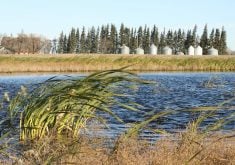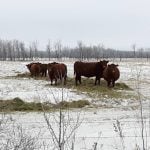Some cattle producers in select areas of Manitoba are heading into the new year facing feed and forage shortages due to weather problems in the province that occurred last season, as well as over the past couple of years.
Hot, dry weather caused damage to some crops in Manitoba during the summer, which was problematic for producers. A drought seen in the U.S. also impacted producers in the province, as U.S. feed prices rallied to new record highs and Canadian prices followed along. The high prices made it more difficult for farmers to purchase feed for their cattle and manage to make a profit.
Read Also

Beekeepers want financial protection against tropi mite
What happens to beekeepers if the deadly tropi mite reaches Canada? Discover why farmers want robust compensation to protect pollination.
If feed prices continue to be high in the spring of 2013, the logistics of cattle marketing in Manitoba will probably change, said Rick Wright, a buyer with Heartland Order Buying Co.
“If the grain prices stay high throughout the spring, we’re going to see finished cattle move sooner than what they normally move, and at a little lighter weight — which, in turn, will produce less beef per carcass,” he said.
There weren’t any cattle sales held at auction yards in the province during the week ended Jan. 4, so the impact of high feed prices in 2013 has yet to be seen. A table of the first sales of 2013 is attached.
In the fall of 2012, cattle prices in the province managed to stay stronger than anticipated despite the high cost of feed. Prices were underpinned by strong demand and a lack of supply, according to industry officials.
Forage inventories are also sparse in some parts of Manitoba due to weather problems from 2011 that continued to plague producers in 2012, said Cam Dahl, operations manager with Manitoba Beef Producers.
“There are forage and pasture shortfalls in the areas around Lake Manitoba and our great lakes because the 2011 floods still aren’t over, and people forget that,” he said. “If all your pasture was under water in the spring of 2012, you were completely unproductive.”
Because of the forage shortage situation, he noted, some farmers across the province are cutting back on cattle production. “In particular around the great lakes, there are herds that are being liquidated or reduced significantly because of the lack of pasture and forage.”
One positive for farmers is that earlier concerns about wells running dry have now eased a little bit, because the province has seen good amounts of precipitation, Dahl said.














